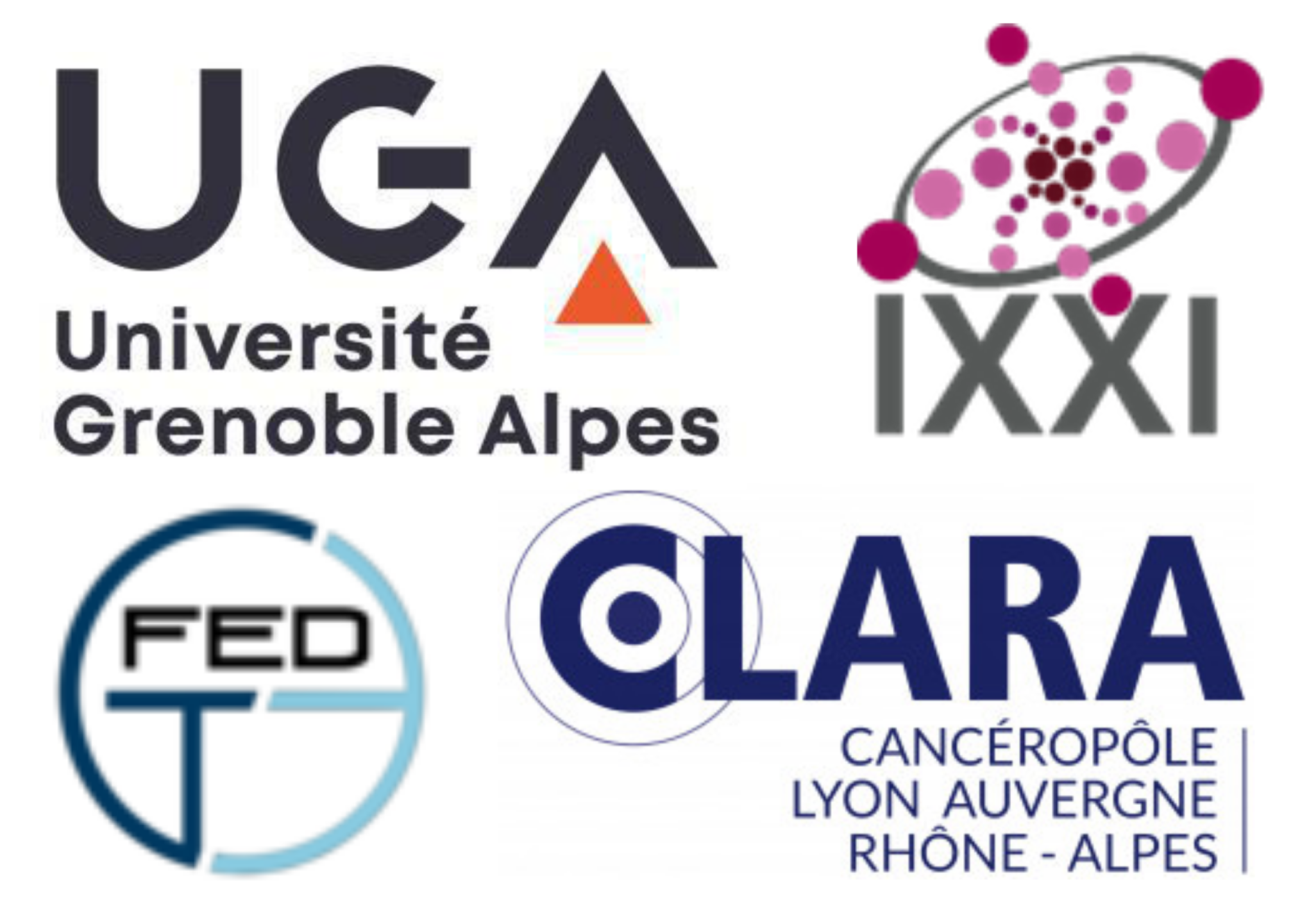Neuroblastoma (NB) is one of the most common cancer for children, from 7 to 10% of all pediatric cancers. Because of its heterogeneity, no specific treatments are available. Extracellular matrix composition and stiffness was found to have an impact on the proliferation and differentiation of NB. What could be the combined effect of those two parameters?
Proliferation and differentiation of NeuroBlastoma (NB) are affected by the extracellular matrix composition and stiffness. New treatments are needed to address the high-risk situations and heterogeneity of neuroblastoma. We want to mimic some aspects of NB using biomaterials to investigate the roles of matrix stiffness and bioactivity on NB differentiation, in a high throughput manner.
For that, we use two types of biomaterials. First, Streptavidin (SAv) biomimetic platform with well-defined surface functionalization on a PDMS base of controlled stiffness. Second, Layer by Layer (LbL) films to test the role of Retinoic Acid RA and Transforming Growth Factors (TGF) when bound to the film or added in solution (soluble) on NB behavior. NB differentiation is assessed via cell morphology and neurite formation.
Tests are performed with Neuro2A and SH-SY5Y neuroblastoma cell lines.
The biomaterials were automatically prepared using a pipetting robot. To match this high throughput production, data were obtained with high content living cell imaging to quantify cell proliferation and high content immuno-fluorescence microscopy to visualize specific markers. Images were analyzed using an array of high content analysis software, notably a high content FijiJ macro. We aim to analyze a wide range of parameter (shape of cell, neurite length and number, size of cell) in a high throughput manner, on support going from simple glass, to biomimetic platforms and films.
Softer substrates, LbL films, and grow factor presentation seem to enhance cellular differentiation. However, we still need to optimize the conditions, increase the number of experiments, and acquire more data. High content images acquisition is settled up, but the analysis could require improvement.
To go further in the biomimetic aspect, we plan to built a 3D model culture , by implementing scaffold to support the engineered biomaterials. By combining 3D, LbL film, and SAv platforms, we would be able to achieve precise spatial, mechanical, and chemical tuning.
This will introduce an additional dimension to the intricacy of analysis, but also represents an opportunity for development of new and innovative techniques, and to get ever closer to the in vivo model.


 PDF version
PDF version
